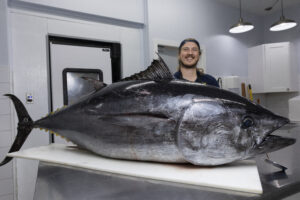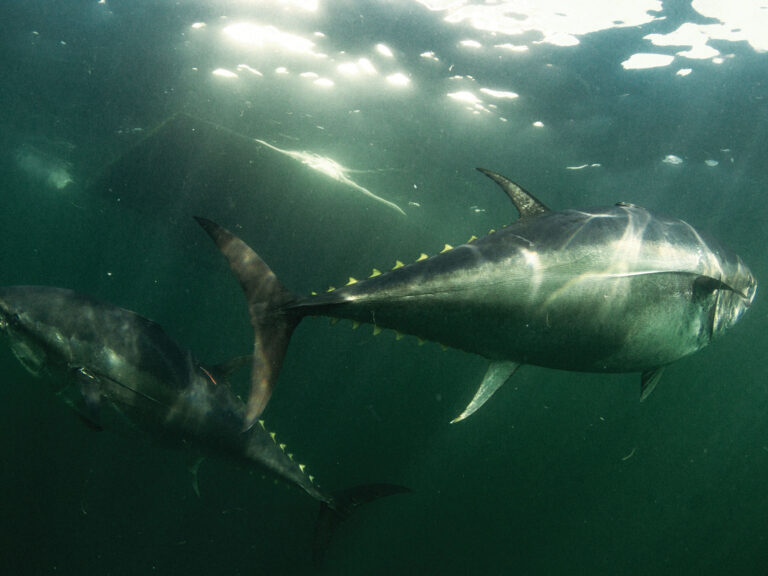Capt. Shannon Attales is passionate about his dolphin fishing. Skippering Warbird from Bud n’ Mary’s Marina in Islamorada, his A-game remains in full play, whether he’s running and gunning or trolling for dolphin. And when he settles into dragging baits, he believes his edge over the competition comes from a spread of sharply dressed ballyhoo.
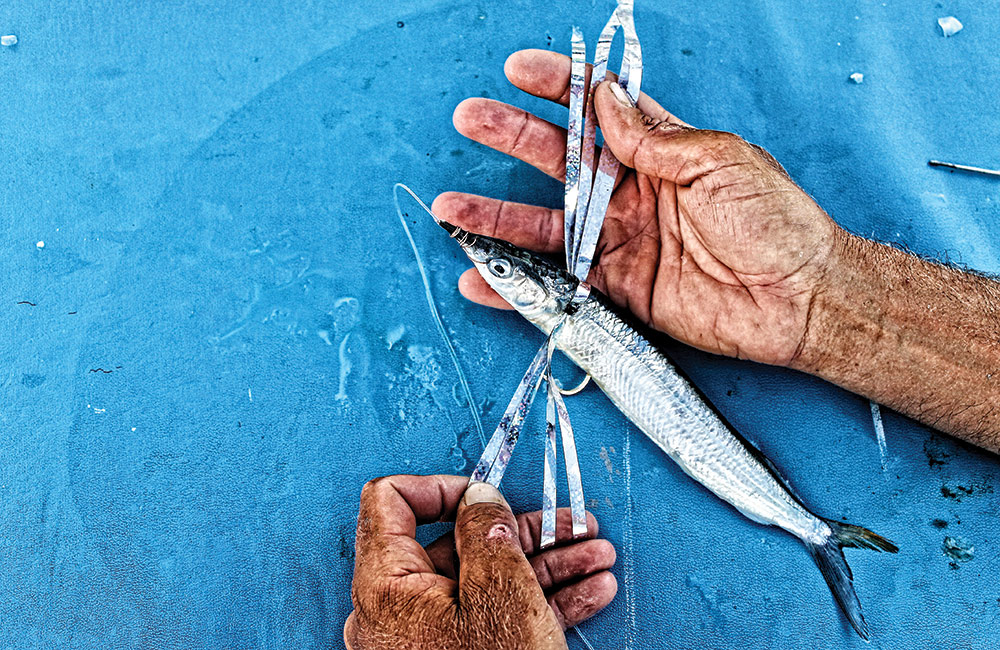
Incorporating Mylar strips onto his ballyhoo rigs, Attales provides these baits with additional flash and wing-flapping action that large dolphin can’t ignore. The reason? His ballyhoo baits now closely resemble flying fish, a staple forage for dolphin. What’s more, compared to artificials, these handsome ballyhoo still retain scent and taste; dolphin simply consume them. “You can’t beat them,” Attales swears. “Plus, it costs just pennies more and a couple of extra minutes to add double-sided Mylar wings.”
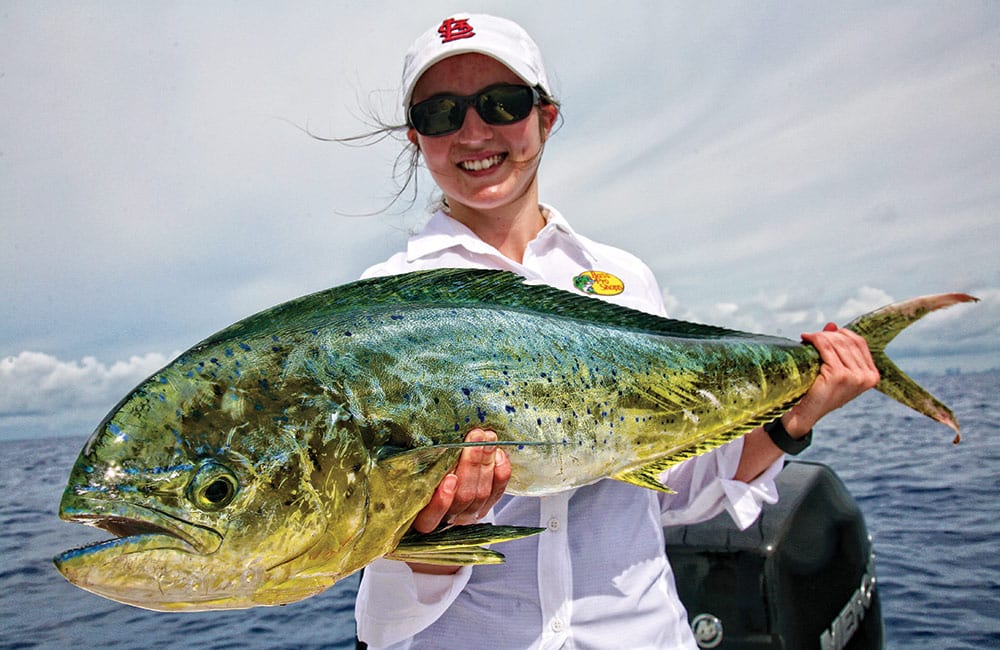
Variations for Mylar Rigs
Not unlike an arts-and-crafts class, anglers take creative liberties when fabricating Mylar wings. Make them thick or narrow; cut evenly into thin streamers, rounded or cut straight at their ends; and make them as long or as short as deemed appropriate. Although, Attales suggests not cutting them even with the hook bend, to avoid hook-wrapping. “Go short or long,” he says, “but avoid the hook. I cut my wings so they end near the tail of the ballyhoo.”
Creativity includes design and color experimentation. Double-sided silver or silver glitter is hard to beat for flash and raising fish. In the eyes of a dolphin, a glitter blue may more closely mimic flying fish, particularly when they’re lit up in terror and fleeing charging dolphin or other game fish. Bright gold and red also make for highly visible baits. Experimentation is key. Dial in on a potent combination and go with it. Yet keep a few color variations on hand in case the first choice isn’t working or to add variety to the spread.
How to Rig It
Basic rigging components include a medium ballyhoo, 8 feet of 100-pound-test mono or fluorocarbon leader, a 7/0 long-shank hook, soft rigging wire, orthodontics/bridling-style rubber bands, an open-ended rigging needle, and double-sided Mylar cut into wings. Again, this example is for dolphin. Variations can be applied to a variety of ballyhoo sizes intended for a wide range of game fish.
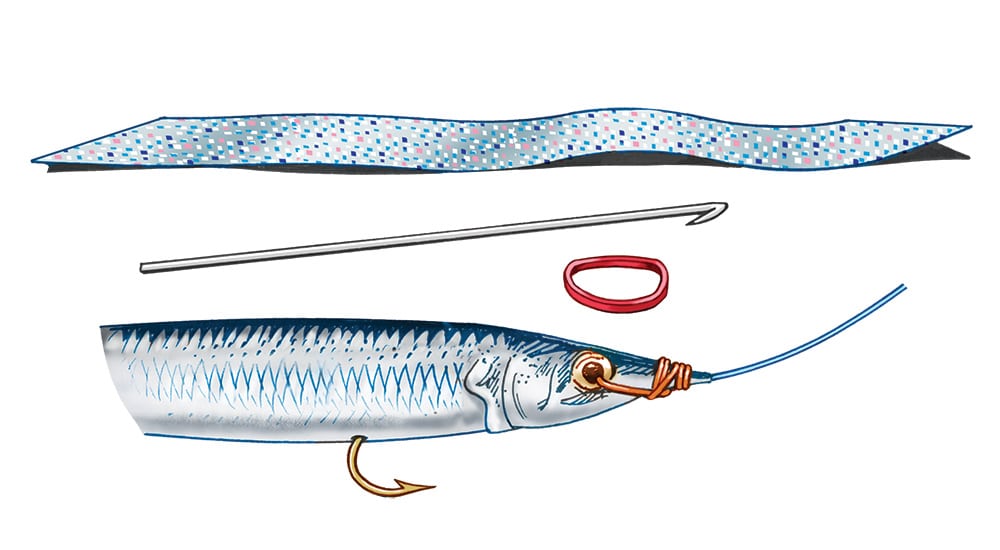
After limbering up a ballyhoo, clip off its pectoral fins. Thread the ballyhoo onto the hook, through the throat latch and out the belly. Push the soft copper wire through the middle of the lower jaw and out through the upper jaw. Wrap three times around the mouth and leader, then go through the eye sockets, and finish with tight wraps back down around the jaws.
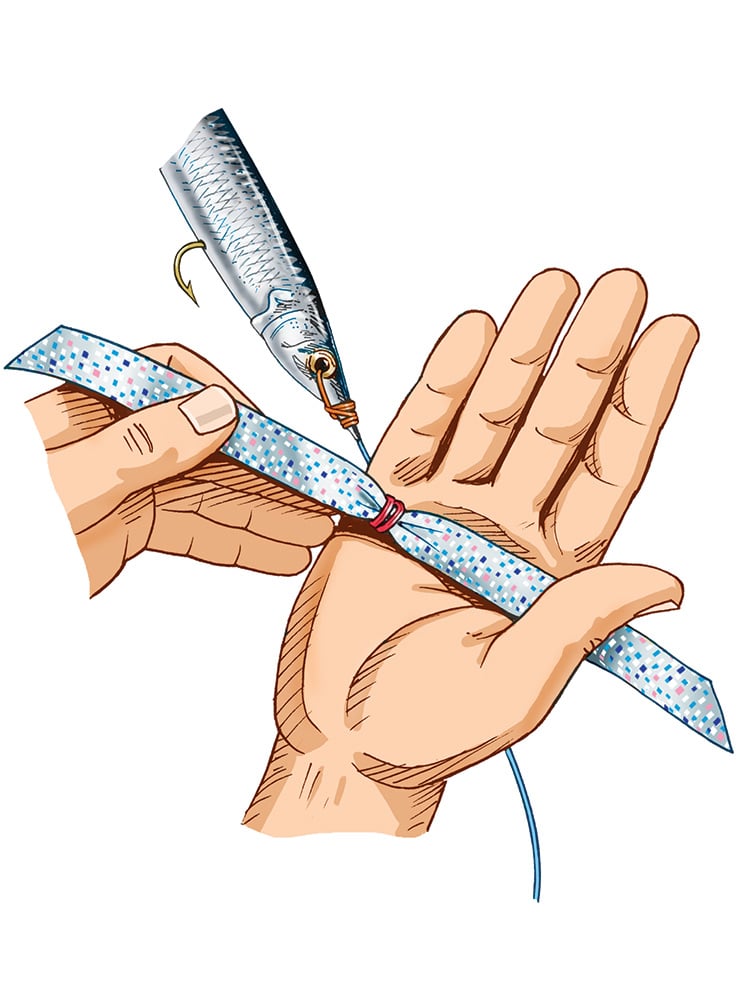
Double a small rubber band and slide it to the middle of the Mylar wing.
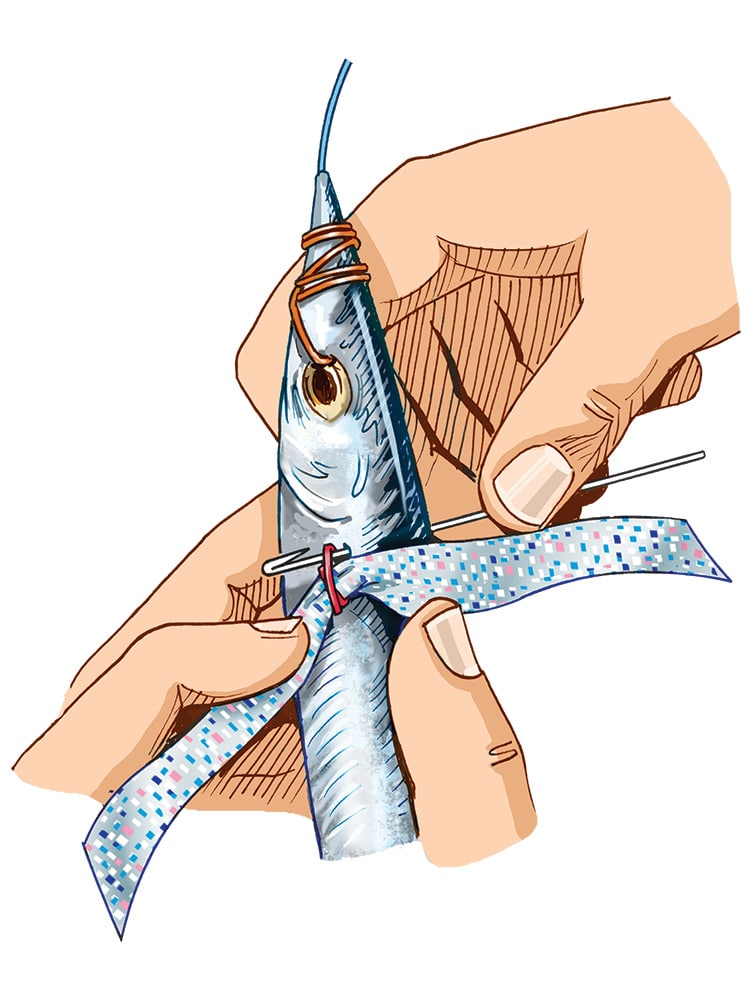
Pass a rigging needle completely through the bait at the lateral line, just above the pec-fin socket and directly above the hook point. Hook one strand of the rubber band to the rigging needle’s open eye and pull it through the bait.
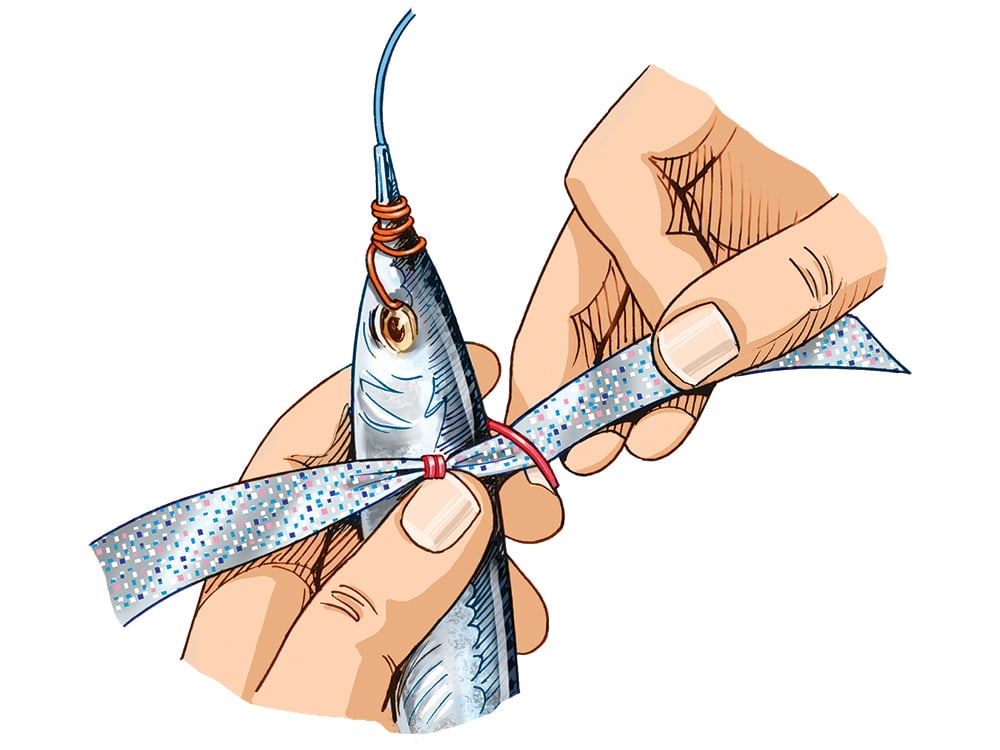
Pull one Mylar wing over the back of the ballyhoo and through the rubber-band loop. The rubber band should retract, causing the wing to lie across the back of the bait.
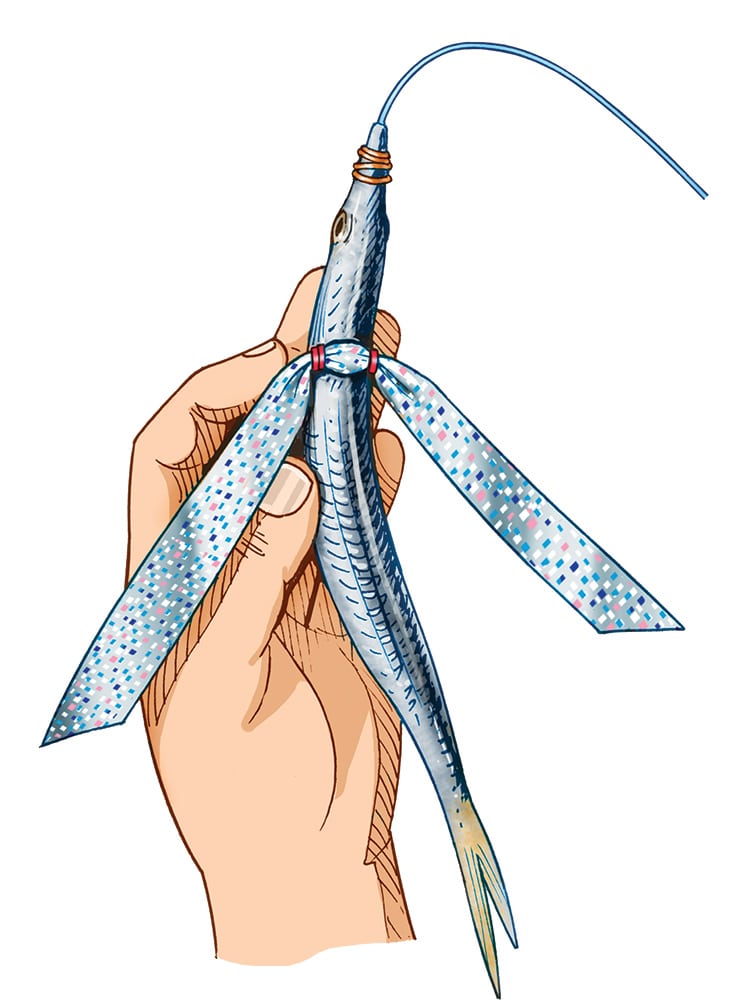
Above is the finished product.
NOTE: Pitch baits can also be rigged in a similar fashion. The wings flash and pulsate during a retrieve-pause-retrieve action and flap aggressively when skipped across the surface. When a dolphin grabs the bait, free-spool and let it eat. Then set the hook and enjoy the fun.

